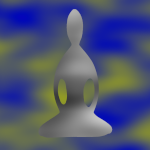Dear Friends,
The Sunday Morning Insight Meditation Study Group listens to a recorded talk in the week, and then meets to meditate and discuss the talk on Sunday mornings.
The talk this week is on joy. In the talk, Adrianne Ross shares a slogan from Pema Chödrön: Stop. Notice. Appreciate. Share.
Here’s what Pema says about this slogan:
Sharing Happiness
When you experience any kind of pleasure or well-being in your life–appreciating a bright spring day, a good meal, a cute baby animal, or a nice hot shower–notice it and cherish it. Such simple pleasures can bring us a lot of joy, tenderness, and a sense of relief. We have many of these fleeting golden moments in our life, but we usually speed right past them. So the first part of the practice is just to stop, notice, and fully appreciate them. Next, you make the wish that other people could also enjoy them. As you do this practice more, you will probably find yourself noticing these moments of happiness and contentment more and more.
When you practice giving in this way, you don’t bypass your own pleasure or enjoyment. Say you’re eating a bowl of delicious strawberries. You don’t think, “Oh, I shouldn’t really be enjoying these so much. Think of all the other people who don’t even have a piece of bread to eat.” Instead, you should think, “Wow! This is a fantastic strawberry. I’ve never tasted anything so delicious.” You can enjoy your strawberry thoroughly. But then you think, “I wish everyone could enjoy this, I hope that they will have a chance to enjoy this too.”
This ties into Andrea Fella’s question of “what’s obvious?” Quite often we zip by joyful moments, not noticing when they arise. But if we incline our minds towards noticing joy, we may find that we notice joy in many more places.
In Joy on Demand, Chade-Meng Tan uses this analogy:
Noticing joy is like noticing blue cars (or cars of any color of your choosing) on the road. When you’re in traffic, blue cars pass you by all the time and, usually, you don’t notice them at all. But if you play a game of noticing blue cars, you’ll find they are everywhere. There is joy to be found in many moments of our lives, though it may be subtle and fleeting. … The practice is simply to notice joy when joy is there. The more you notice these thin slices of joy, the more they appear to be everywhere, because they have always been there. You just never noticed them before.
Meng ties this noticing practice to the habit loop we discussed earlier:
The cue is whenever there is any experience of joy, the routine is the simple act of noticing it, and merely being aware of joy is intrinsically rewarding. Hence, all three components required to form a habit are effortlessly present. All you have to do is notice joy.
So today, I invite you to make joy a habit.
With best wishes,
Andrea

Thank you. I often express my happiness at an event or thing, but don’t signal it as ‘joy’, nor fully appreciate it as such. I will now! Thanks Andrea.
I really like this reminder and the tie into the steps of developing healthy habits, cue routine reward. So simple yet so powerful. Have a joyful day!